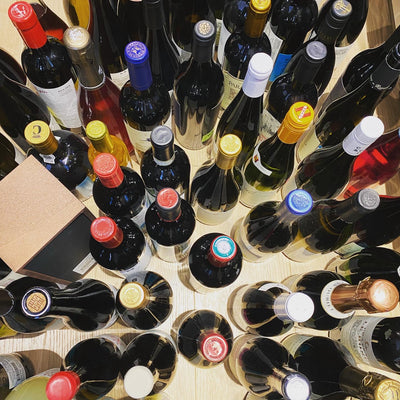Thibaud Boudignon: Reviving the Legend of Savennières
Aug 04, 2025
“Thibaud Boudignon works some of the most exciting vineyards in the entire appellation, and is one of its most convincing young vignerons, producing a thrilling range of wines.”
— thewinedoctor.com (arguably THE best online resource for serious Loire Valley insight)

Tucked into the heart of Anjou, the quiet village of Savennières has long been whispered about by insiders as one of the greatest terroirs for Chenin Blanc in the world. And yet, despite its pedigree, both Anjou and Chenin Blanc have often struggled to ignite the imagination of the broader wine-drinking public. If that changes—and it should—it will be thanks, in no small part, to the electrifying work of Thibaud Boudignon.
A former judo champion originally from Bordeaux, Boudignon launched his eponymous domaine in 2009 with just a few hectares. Today, he is one of the Loire Valley’s most sought-after names. His path to greatness began at Château Olivier (Grand Cru Classé in Pessac-Léognan), before sharpening his skills further with stints at Philippe Charlopin and Domaine de la Souche in Burgundy. When he returned to the Loire to establish his own domaine—buying parcels in Anjou and renting vineyards in Savennières—he set out to make wines of crystalline focus and uncompromising purity.
While Chenin Blanc is often celebrated for its lusciously sweet and fruit-driven expressions (and rightfully so), Boudignon’s vision is laser-focused on dry, mineral-driven wines with chiseled precision. His wines hum with tension—high-wire acts of taut acidity, texture, and terroir. A single sip of his now-iconic Clos de la Hutte immediately brought to mind the steely grace of Raveneau’s Chablis and the wild, elemental intensity of Didier Dagueneau’s Pur Sang. “Like drinking a lush laser beam,” is how I recall the experience.
Boudignon farms his vineyards biodynamically, though he’s never sought certification. “I’d rather invest in a great barrel than a piece of paper,” he’s said—a sentiment that speaks volumes about his priorities.
His vineyard holdings include:
-
Savennières Clos de Frémine (1.5 ha) – on sandier soils; delicate and lifted
-
Savennières Clos de la Hutte (2.5 ha) – on schist; powerful, structured, and brooding
-
Savennières Clos Devant le Jeu (1 ha, planted 2020)
-
Savennières La Vigne Cendrée (0.5 ha, rented) – grown on a mosaic of purple schist, granite, and clay; rich, almost Burgundian in texture (despite zero malolactic fermentation)
-
Anjou (2 ha, in Saint-Lambert-du-Lattay and Bonnezeaux – rented)
Even though these parcels are all within close proximity, each bottling showcases a radically different expression of site. The common thread is transparency, tension, and restrained power—a style that stands in contrast to the richer, oakier interpretations of Savennières often found elsewhere.
A turning point came in 2016 with the completion of his new gravity-flow cellar, built adjacent to Clos de la Hutte. It’s here that Boudignon has further refined his minimalist, precision-led approach. Ageing takes place in a mix of 350L, 600L, and 1200L barrels, with a decreasing reliance on new oak across the range.
The results speak for themselves: these are age-worthy, terroir-driven Chenin Blancs of rare energy and finesse. Sommeliers across the globe have taken notice—at last count, Boudignon’s wines appeared on the lists of 19 of France’s three-Michelin-starred restaurants.
If you're looking for the future of Chenin Blanc—or just want to drink one of the most compelling white wines being made in France today—look no further than Thibaud Boudignon.




